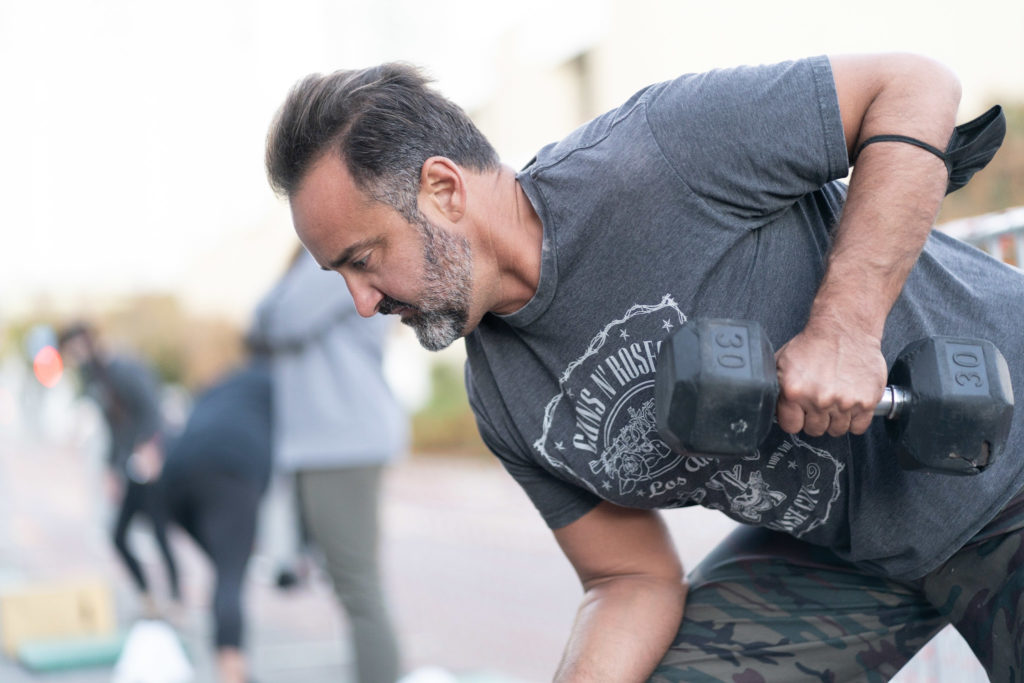
8 Reasons to Integrate Unilateral Training
Written by Bryce Smith
One of my favorite things about training and working out is the almost limitless options to gain strength, build muscle, increase range of motion, and feel better over all. If you aren’t careful, this can lead to some paralysis by analysis which is why it’s always great to hire a coach. I might know a guy!
Most good functional training programs have a wide variety of bilateral (both sides working at same time) movements that consist of squats, deadlifts, presses, pulls, the Olympic weightlifting movements of cleans, snatches, and jerks, jumps, and some integration of nonstructural movements like rowing and skiing.
All of these are great, but after 20+ years in athletics, professional basketball, and coaching a wide array of athletes, I’d like to make a simple observation: almost all athletic movements are done unilaterally. Whether on a field, court, track, bike, skates, or other athletic arena, many of the movements are in a unilateral (single side) fashion. This does not mean unilateral is better than bilateral, but it is definitely worth highlighting a bit as unilateral work often gets overlooked.
What is Unilateral Training?
This is when we actively train one side of the body at a time. Rather than traditional lifts – i.e. back squats and bench press – that have us performing bilateral movements (both limbs/sides at the same time) we focus on only at a time to fully isolate that portion of the body.
Benefits of Unilateral Training
Correct Imbalances
By solely performing bilateral lifts like squats and deadlifts, many imbalances may go unnoticed, often hidden by the body’s natural tendency to compensate.
Core Stabilization
With unilateral training, you can challenge your core muscles to support the imbalanced load, promoting sound movement patterns.
Boost Sport Performance
Sport and power athletes can and should integrate unilateral training as part of their assistance work to bulletproof their bodies and practice how they play.
Decrease Injury Risk
Injuries often result from overuse, muscular imbalances, or poor movement. Unilateral training offers coaches and athletes the ability to isolate specific movements, muscles, and joints to increase symmetry of muscular development and movement.
Improve Muscular Stimulation
The ability to isolate and train individual movements and muscles on a unilateral basis could help promote muscular development and growth. Muscle growth in size for the win!
Speed Injury Recovery
Muscular injuries happen and, unfortunately, they might deter you from exercising regularly. The science implies that unilateral training will not only strengthen the muscles being worked but also has positive effects of strength and muscle on the contralateral (opposite) side.
Develop Motor Skills
Studies suggest that motor engrams — memorized movement patterns stored in the motor area of the brain — may develop after performing unilateral movements. This can help with reaction time along with integral movement patterns in life.
Create Program Variance and Mind/Muscle Connection
New movement patterns and integrating something different can be a great way to enhance benefits for athletes while refraining from overuse and burn out. It can also be a great way for athletes to build a better relationship with how they move and discrepancies between each side which can heavily influence mobility protocols and focus points in program design and accessory work.
Examples of Unilateral Movements
The possibilities are nearly endless but here’s a few examples of movements I like to incorporate when training my clients:
1. Single-Arm Dumbbell Bench Press
2. Single-Arm Dumbbell Shoulder Press
3. Reverse Lunges
4. Alternating Cossack Squats
5. Single-Leg Box Step-Up/Step-Downs
6. Single-Arm Dumbbell Row
7. Suitcase Carries
8. Waiter Carries
9. Single-Leg Kettlebell Deadlifts & Single-Leg Deadlifts
10. Single-Arm Kettlebell Sit-Ups
And the list goes on!
If you’re bored of repeating the same movements over and over, and want to spice it up a bit, give some of these movements a shot and let the gains flow! Let us know in the comments some of the unilateral movements you enjoy implementing in your training!